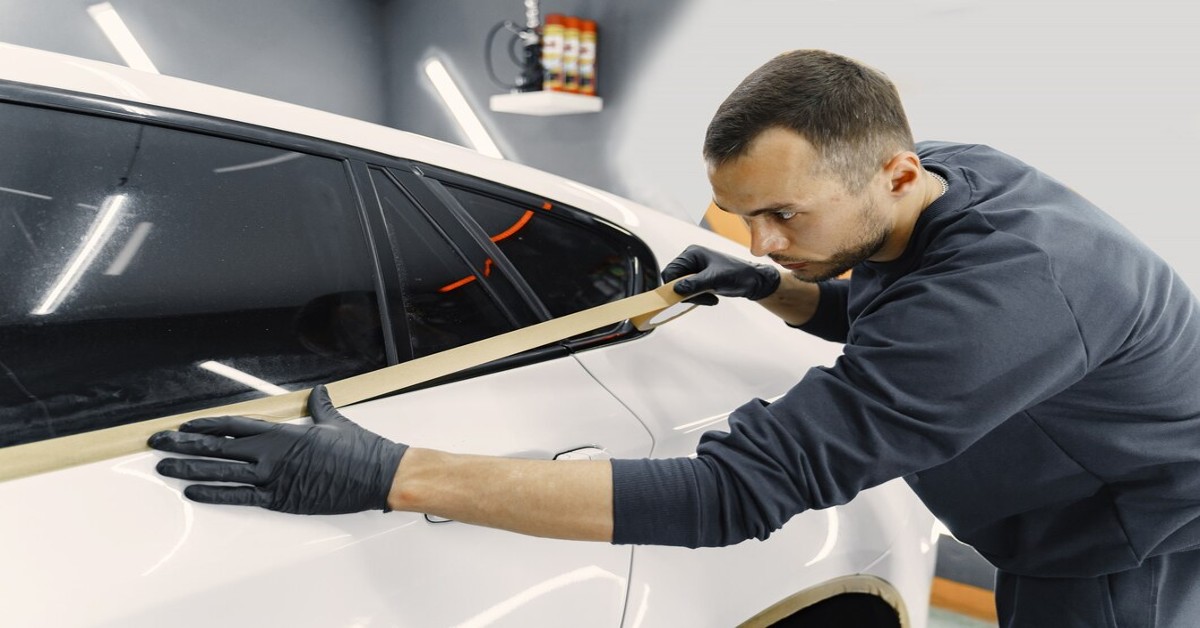A flawless finish and an exemplary shine go beyond just a regular car wash. For a showroom finish, proper detailing and paint preparation prior to applying wax, sealant, and coating is paramount.
However, The first step in achieving the showroom shine and gloss of your paint is to thoroughly inspect it for bonded contamination and an array of different paint defects,
which diminish and dampen the appearance of your vehicle. By identifying and understanding the problem one can make better-educated decisions on which tools, products, and techniques will prove the best solution for the paint problem.
How To Check For Paint Contamination
Paint contamination consists of bonded and embedded organic and inorganic particles that are harmful to your vehicle’s paint.
These types of contaminants chemically and physically bond to your vehicle’s paint and cannot be removed through regular washing processes.
A few examples are tar, brake dust, rail dust, industrial fallout, paint overspray, tree sap, and hard water spots.
The first check is to physically feel the paint after it’s been washed. Clean and contamination-free paint will feel smooth as glass, but paint that is covered in bonded contamination will feel rough and gritty.
Sometimes contamination can be hard to feel and it’s best to place your hand inside a plastic baggie to check the paint.
The plastic baggie enhances your sense of touch and will give you a better feel for the true condition of your paint.
The Baggie Test is in action on what looks to be clean paint, but is actually rough and gritty.
Over time embedded and bonded particles oxidize, corrode, and deteriorate your vehicle’s paint.
Common signs are the paint looking dull and as a result, will no longer have its initial gloss or shine. As time goes on these contaminants can cause clear coat failure,
rust from moisture penetrating broken areas in the paint, etching effects on the painted surface, and other un-repairable damage if left unattended.
In addition to causing paint damage and failure, contamination prevents any type of wax, sealant, and coating from bonding properly to your paint. Last step products (waxes, sealants, and coatings) are designed to bond to paint, not to any type of contamination that is embedded or covering the surface.
If the contamination is not removed last step products do not perform to their true potential resulting in shorter life spans and less shine and gloss.
How To Check For Paint Defects
The most common paint defects are swirls and scratches, Random Isolated Deep Scratches (RIDS), holograms, etching, orange peel, and oxidation.
Over time the elements, the sun, and improper washing and detailing can really take their toll on your paint.
Very few vehicles stay looking the same years or even months after being purchased because unfortunately, most people aren’t aware of how to properly check for bad paint applications.
The best way to inspect your vehicle’s paint for any defects is to park it outside in direct sunlight. As the direct sunlight hits your car it will show any defects in that particular area.
It’s important to inspect your vehicle by using a single light source and by changing your viewing angles to see how that light source changes the appearance of the paint.
A single light source is important because surfaces that are flat and shiny reflect light the best, such as a mirror. When light hits a flat, shiny surface (traveling in one direction or from a single source) all of the light rays are reflected in the same direction.
When light hits a rough, uneven surface, the light rays scatter in all different directions, causing us to see a rough or less clear surface.
A common example of this is water on a lake. On a calm day, the reflection on the water is a mirror image, but on windy days the water is choppy and it’s nearly impossible to make out the reflection.
Another way to easily spot paint defects is by using a single source of light such as a high-powered LED flashlight, LED or halogen work light, or a similar type of light that works best for you.
With handheld lights, it’s easier to maneuver the light source and yourself to spot defects but I prefer to use halogen work lights because I can choose their position and it will stay constant, unlike a handheld source.
Again it’s very important to move your body around and inspect the paint from different angles and with different light sources.
When paint defects, oxidation, and bonded contamination are present, your paint will look rough, dull, and discolored, the opposite of a freshly painted and well-maintained vehicle.
Most people don’t notice the transition from brilliant shiny to dull and hazy paint because it happens slowly over time, but what they do notice is their car no longer looks as good as it did when they bought it years or even months earlier.
Even after a basic wash and wax, their vehicle will look a little better but the pop and luster of the paint will be lost. The good news is proper detailing, decontamination, and paint correction and polishing can bring your car back to its former glory.


